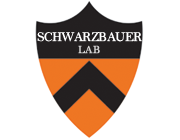Nerve Guidance by a Decellularized Fibroblast Extracellular Matrix.
Type
Spinal cord and peripheral nerve injuries require the regeneration of nerve fibers across the lesion site for successful recovery. Providing guidance cues and soluble factors to promote neurite outgrowth and cell survival can enhance repair. The extracellular matrix (ECM) plays a key role in tissue repair by controlling cell adhesion, motility, and growth. In this study, we explored the ability of a mesenchymal ECM to support neurite outgrowth from neurons in the superior cervical ganglia (SCG). Length and morphology of neurites extended on a decellularized fibroblast ECM were compared to those on substrates coated with laminin, a major ECM protein in neural tissue, or fibronectin, the main component of a mesenchymal ECM. Average radial neurite extension was equivalent on laminin and on the decellularized ECM, but contrasted with the shorter, curved neurites observed on the fibronectin substrate. Differences between neurites on fibronectin and on other substrates were confirmed by fast Fourier transform analyses. To control the direction of neurite outgrowth, we developed an ECM with linearly aligned fibril organization by orienting the fibroblasts that deposit the matrix on a polymeric surface micropatterned with a striped chemical interface. Neurites projected from SCGs appeared to reorient in the direction of the pattern. These results highlight the ability of a mesenchymal ECM to enhance neurite extension and to control the directional outgrowth of neurites. This micropatterned decellularized ECM architecture has potential as a regenerative microenvironment for nerve repair.

